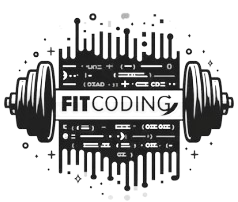Launching an eCommerce business is more accessible than ever, but sustaining growth and profitability requires more than just a sleek storefront and a solid product. Today’s online entrepreneurs must think like analysts—measuring every click, conversion, and cost to build a lean, high-performing business.
In fact, one of the first questions savvy founders ask is: what’s my average CAC ecommerce? That figure—Customer Acquisition Cost—is just one of several critical metrics that offer insight into how well (or poorly) your online business is functioning. These numbers can spell the difference between growth and stagnation, profit and loss.
Let’s walk through five key metrics every new eCommerce entrepreneur should monitor closely to make informed, data-driven decisions right from day one.
1. Customer Acquisition Cost (CAC)
What it is:
Customer Acquisition Cost refers to how much money you need to spend to acquire a single paying customer. This includes marketing spend, advertising costs, tools, and salaries associated with sales or outreach.
Why it matters:
High CAC can erode your profit margins, especially if your customer doesn’t return for a second purchase. Startups often burn through capital acquiring users without calculating the long-term value. Understanding CAC early helps ensure sustainable growth.
How to calculate it:
CAC = (Total Marketing + Sales Spend) / Number of New Customers Acquired
Best practice tip:
Segment your CAC by channel—Google Ads, Instagram, influencer campaigns—to determine which avenues bring the most cost-effective customers.
Pro insight: As a rule of thumb, your CAC should be significantly lower than your Customer Lifetime Value (CLV). Many analysts recommend aiming for a CLV:CAC ratio of 3:1.
2. Customer Lifetime Value (CLV)
What it is:
CLV tells you how much revenue you can expect from a single customer over the duration of their relationship with your brand.
Why it matters:
CLV helps determine how much you can afford to spend on acquisition (CAC). If your customers only buy once, you’ll need a low CAC to remain profitable. But if they purchase repeatedly, you have more flexibility to invest in marketing.
How to calculate it:
CLV = Average Order Value × Purchase Frequency × Customer Lifespan
Best practice tip:
Use email campaigns, loyalty programs, and subscription models to increase both frequency and lifespan.
According to Harvard Business Review, increasing customer retention rates by just 5% can increase profits by 25% to 95%. CLV is your long game—maximize it, and CAC becomes a manageable investment rather than a liability.
3. Conversion Rate (CR)
What it is:
Conversion Rate measures the percentage of website visitors who complete a desired action, usually making a purchase.
Why it matters:
If you’re driving traffic but no one is buying, you’ve got a leak in your funnel. Conversion Rate is the diagnostic tool to help pinpoint that problem. Higher CR means better ROI from marketing efforts.
How to calculate it:
CR = (Total Conversions / Total Visitors) × 100
Best practice tip:
Run A/B tests on product descriptions, images, page layout, and calls-to-action. Even small tweaks can boost CR by 10–30%.
Pro tip: The average eCommerce conversion rate ranges between 2%–3%. If yours is below that, dig into heatmaps and user behavior tools to diagnose friction.
4. Average Order Value (AOV)
What it is:
AOV tracks the average amount a customer spends in a single transaction.
Why it matters:
Increasing AOV can improve revenue without increasing your traffic or marketing spend. It works in tandem with CAC: if your CAC is $40 and your AOV is $35, you’re losing money—unless you raise AOV or boost CLV.
How to calculate it:
AOV = Total Revenue / Number of Orders
Best practice tip:
- Use product bundles or “frequently bought together” suggestions
- Offer free shipping thresholds
- Use upselling/cross-selling at checkout
Smart move: Track AOV by traffic source to see which channels bring in high spenders.
5. Cart Abandonment Rate
What it is:
This metric tells you how many customers add items to their cart but leave without purchasing.
Why it matters:
It’s a signal that something is breaking trust or convenience at the final stage. Whether it’s shipping fees, poor checkout design, or lack of payment options, knowing your cart abandonment rate gives you a clear place to optimize.
How to calculate it:
Cart Abandonment Rate = (Carts Created – Completed Purchases) / Carts Created × 100
Best practice tip:
- Send abandoned cart emails within 30–60 minutes
- Use exit intent pop-ups with discount codes
- Simplify your checkout flow and show progress indicators
Per Baymard Institute, the average cart abandonment rate is nearly 70%. Reducing it even slightly can result in a big sales bump.
Data Is Your Competitive Advantage
In today’s competitive eCommerce landscape, guessing is costly—but measurement is powerful. While flashy branding and influencer shoutouts grab attention, it’s the metrics behind the curtain that reveal whether your business is built to last. From keeping CAC in check to lifting AOV and optimizing your funnel, each number is a lever you can pull.
By tracking these five key metrics consistently, you’ll gain the clarity needed to:
- Reduce waste in ad spending
- Personalize customer experiences
- Improve profit margins
- Scale confidently without losing control
Remember, it’s not just about growth—it’s about profitable, sustainable growth. And the best way to get there is through intentional, informed decision-making based on the numbers that matter most. So whether you’re just getting started or optimizing your existing store, let these metrics be your guide.










